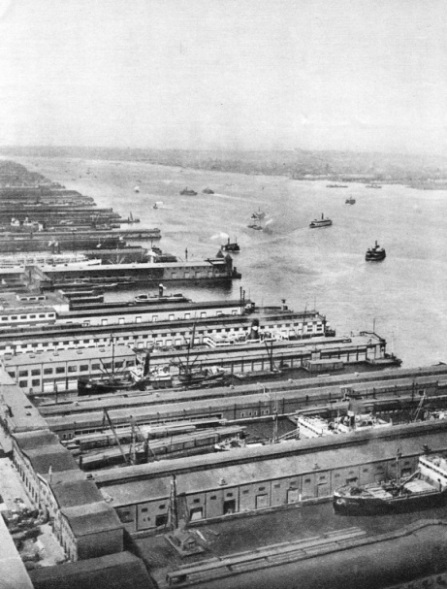
© Shipping Wonders of the World 2012-



Part 18
Part 18 of Shipping Wonders of the World was published on Tuesday 9th June 1936.
It included a centre photogravure supplement featuring New York, which formed part of the article on New York - Key to a Continent .
The Cover
The cover of the present issue is a somewhat remarkable view of the Berengaria leaving her dock at Southampton in January this year. The picture was taken from under the stern of the Aquitania as she arrived from New York.
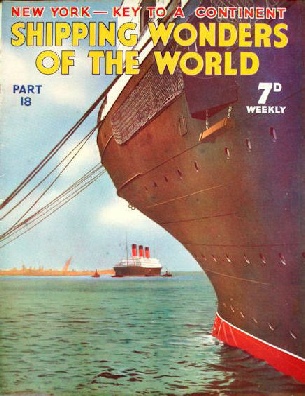
Contents of Part 18
The Chelyuskin Rescue
Concluded from part 17
Refrigerated Ships
Elaborate precautions have to be taken to preserve in good condition chilled or frozen meat and provisions carried over long distances. Specially built ships of interesting design are used on these routes. During the last fifty years the refrigerated ship has changed conditions of life for millions of people, especially those who live in crowded industrial countries such as the British Isles, in primarily agricultural and farming countries overseas such as Australia, New Zealand, South Africa and the Argentine, and in many tropical counties.
This chapter is the second in the series the Romance of the Trade Routes.
You can read more on cold storage and refrigeration in Wonders of World Engineering.
New York - Key to a Continent
All the world’s fastest steamship services from Europe to the United States converge on the Port of New York, with its magnificent natural harbour on the Atlantic seaboard of the North American continent.
This chapter is the fifth article in the series Great Ports of the World.
New York (photogravure supplement)
The Incessant Traffic of the Hudson River
THE INCESSANT TRAFFIC OF THE HUDSON RIVER passes between New York State and the State of New Jersey. This photograph shows the view from the Manhattan docks across to Hoboken. New York City has one of the best natural harbours in the world. The total water-frontage of the port is about 770 miles. Of this length some 350 miles have been developed. The port area covers a radius of about 20 miles from Manhattan Island.
New York:
Photogravure Supplement
APPROACHING HER BERTH. A striking photograph of the Cunard White Star liner Berengaria (ex-Imperator, 52,101 tons), assisted by tugs, coming into the Cunard pier. The greatest liner piers are on the west side of Manhattan Island, facing the Hudson River. The length of the Hudson River piers has recently been increased from 900 feet to 1,100 feet, to accommodate such vessels as the Queen Mary and the Normandie.
Contents of Part 18 (continued)
The North Sea Passenger Mail and Cargo Packet
ON the often stormy route across the North Sea between Esbjerg, the Danish port on the west coast of Jutland, and Harwich, in Essex, a daily service is maintained by the United Steamship Company of Copenhagen. The passage in either direction occupies twenty-three to twenty-four hours, with fast train connexions at either end, Esbjerg being linked by rail with Copenhagen and Harwich with London. The vessels may aptly be described as “all-purpose” ships, for they carry not only passengers, but also refrigerated produce, general cargo and mails.
This is the thirteenth article in the series on Merchant Ship Types.
The Work of Trinity House
The activities of Trinity House - an organization that probably began with the earliest years of British shipping - include the maintenance of navigation arks and lights round the British coast-lines and the provision of an efficient pilotage service. The Corporation of Trinity House has a position different from that of any other organization in the world.
Raising a Submarine Minelayer
An exciting chapter was added to the history of salvage when, in 1917, Commander Davis raised from the sea bed and beached on the Irish Coast a submarine that was loaded with live mines. In 1917, when enemy submarines were taking such a toll of British shipping, the least bit of information concerning the movements of U-boats was of vital importance to the Admiralty. To gain this information some wonderful savage work was performed. Commander G Davis, whose story is told in this chapter, safely raised and beached the UC 44.
This is the sixth article in the series on Dramas of Salvage. The article is concluded in part 19.
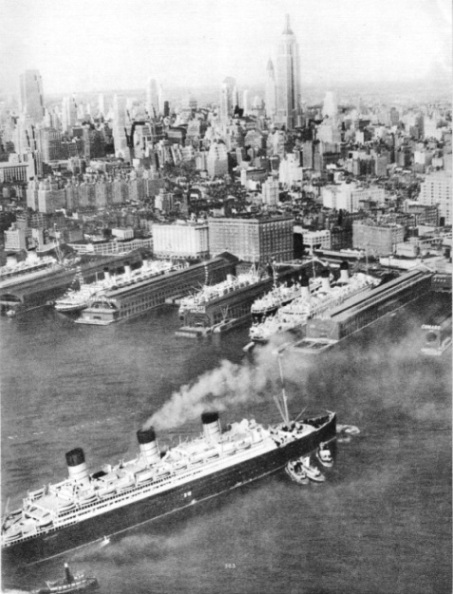
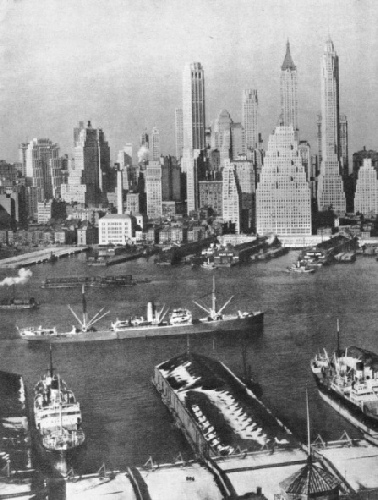
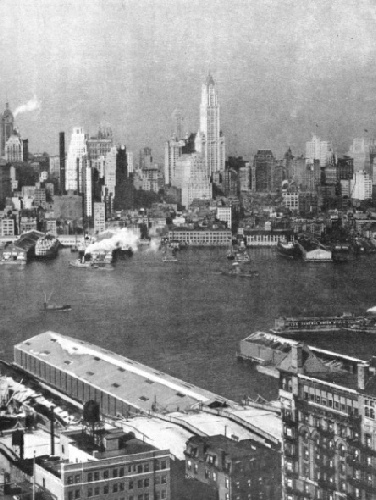
Looking Across the East River From Brooklyn
LOOKING ACROSS THE EAST RIVER from Brooklyn to Manhattan Island. Either side of the river is bordered with docks. On the New York side are docks of the Ward Line (New York and Cuba Mail Steamship Co) and of the Porto Rico Line. Behind these docks rises New York’s imposing array of skyscrapers. The whole of the south end of Manhattan Island, facing East River and Hudson River, is lined with piers and landing places, which are thus easily accessible from the heart of New York City.
